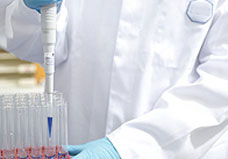| |
 |
|
|
|
|
|
|
Muscular dystrophy |
|
|
What Is Muscular
Dystrophy?
Muscular dystrophy (MD) is a genetic disorder that weakens the
muscles that help the body move. People with MD have incorrect or
missing information in their genes, which prevents them from
making the proteins they need for healthy muscles. Because MD is
genetic, people are born with the problem — it's not contagious
and you can't catch it from someone who has it.
MD weakens muscles over time, so children, teens, and adults who
have the disease can gradually lose the ability to do the things
most people take for granted, like walking or sitting up. Someone
with MD might start having muscle problems as a baby or their
symptoms might start later. Some people even develop MD as adults.
How Do Doctors Diagnose
MD?
In addition to doing a physical examination, the doctor will ask
you about any concerns and symptoms you have, your past health,
your family's health, any medications you're taking, any allergies
you may have, and other issues. This is called the medical
history.
Tests can help the doctor determine which type of MD a person has
and rule out other diseases that affect the muscles or nerves.
Some tests measure how nerves and muscles are working. Others
check the blood for levels of certain enzymes, the proteins that
cause chemical changes like converting food to energy. Abnormally
high blood levels of certain enzymes from muscle cells are present
in many people with MD.
Sometimes a muscle biopsy is needed. The doctor removes a small
piece of muscle tissue and examines it under a microscope. If a
person has MD, the muscle tissue will have some unusually large
fibers, and some of the other fibers will show signs of breaking
down. Finally, genetic testing can show if a person has Duchenne
MD.
How Is MD Treated?
There is no cure for MD, but doctors and scientists are working
hard to find one. Some scientists are trying to fix the defective
genes that lead to MD so they will make the right proteins. Others
are trying to make chemicals that will act like these proteins in
the body. They hope that this will help the muscles to work
properly in people with MD. Doctors are also dedicated to finding
the best ways to treat the symptoms of MD so that kids, teens, and
adults with the disease can live as comfortably and happily as
possible.
Teens with MD can do some things to help their muscles. Certain
exercises and physical therapy can help them avoid contractures, a
stiffening of the muscles near the joints that can make it harder
to move and can lock the joints in painful positions. Often, teens
are fitted with special braces to ensure flexible joints and
tendons (the strong, rubber band-like tissues that attach muscles
to bones). Surgery is sometimes used to reduce pain and increase
movement from contractures.
Because we rely on certain muscles to breathe, some teens with MD
need respiratory aids, such as a ventilator, to help them breathe.
Teens with MD also might need to be treated for problems like
scoliosis, which can be caused by weakened muscles or muscles that
are contracting or pulling too tightly.
For some types of MD, medication can help. Guys with Duchenne MD
may be helped by a medicine called prednisone, and teens with
myotonic MD might use phenytoin or quinine to relax muscles.
It's also important that people with heart problems caused by
muscular dystrophy be monitored by a heart specialist.
|
|
|
|
Muscular dystrophy - treatment of Muscular
dystrophy, Muscular dystrophy types, Disease medicines, Muscular dystrophy
symptoms, Muscular dystrophy and Disease symptoms, Muscular dystrophy
symptoms Disease and diagnosis, Symptoms and Solutions, Signs and Symptoms,
type of Muscular dystrophy, cause common, common Muscular dystrophy,
Muscular dystrophy List, causes list, Infectious Muscular dystrophy, Causes,
Diseases , Types, Prevention, Treatment and Facts, Muscular dystrophy
information, Muscular dystrophy: Definition, Muscular dystrophy names,
medical Muscular dystrophy, medical Muscular dystrophy and disorders, cell
Muscular dystrophy, Muscular dystrophy Worldwide, Muscular dystrophy
Research, Muscular dystrophy Control, Muscular dystrophy Center, Digestive
Muscular dystrophy Week, Information about Muscular dystrophy, causes of
different Muscular dystrophy, Muscular dystrophy Articles, Muscular
dystrophy and conditions, Health and Muscular dystrophy, Muscular dystrophy
Patients, Muscular dystrophy and Sciences, causes of alzheimer's Muscular
dystrophy, Muscular dystrophy causes, alternative medicine heart Muscular
dystrophy, body ailments, Muscular dystrophy medicines, medical antiques,
type of blood Muscular dystrophy |
|
|





